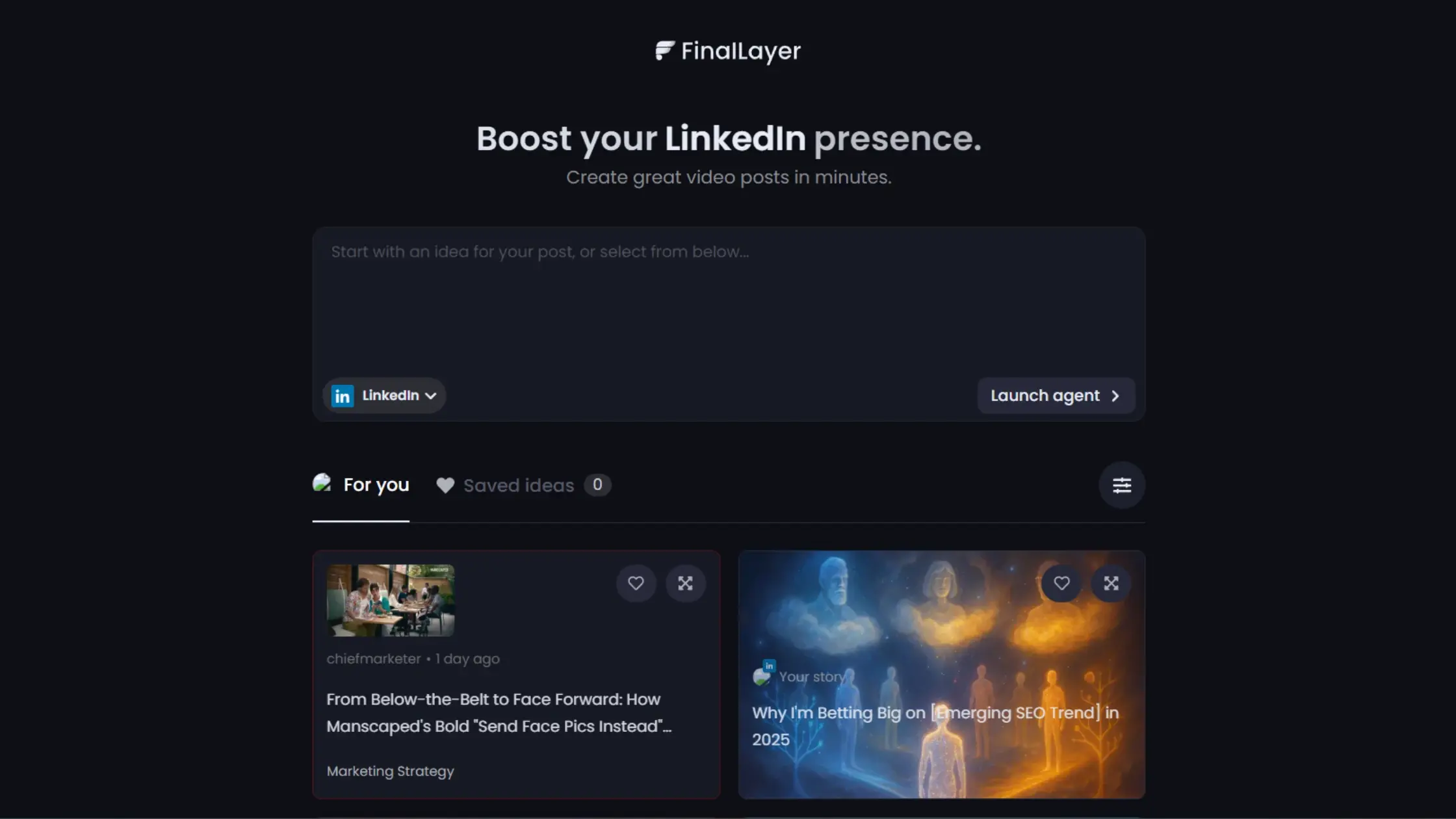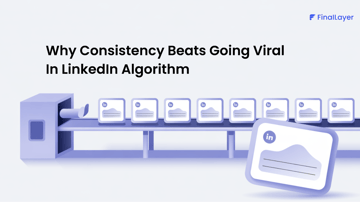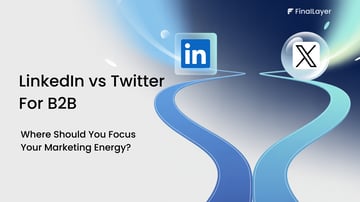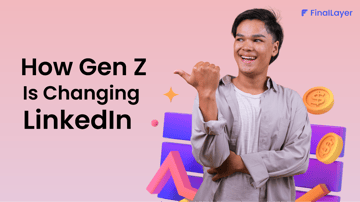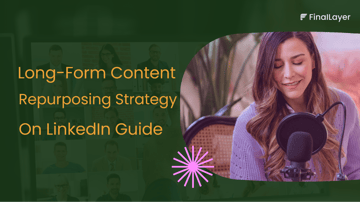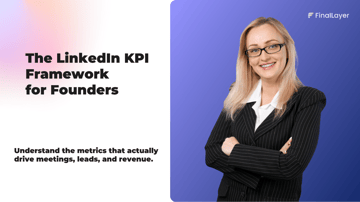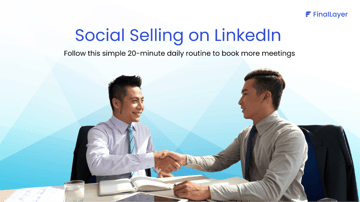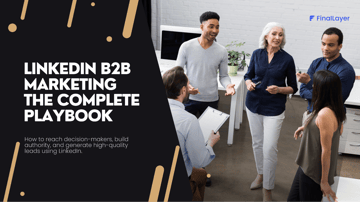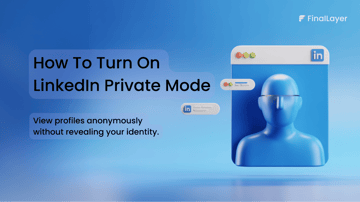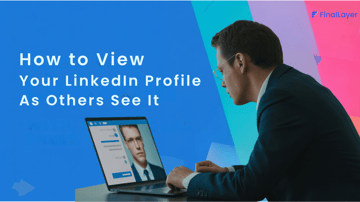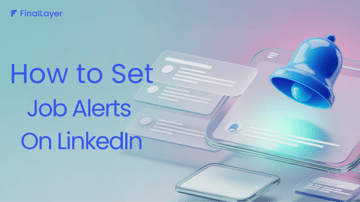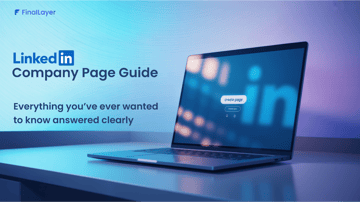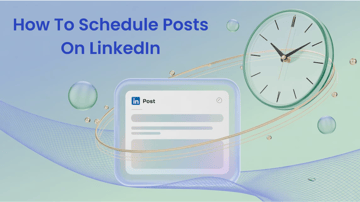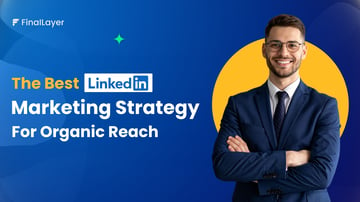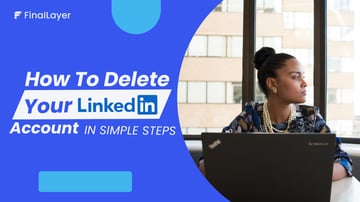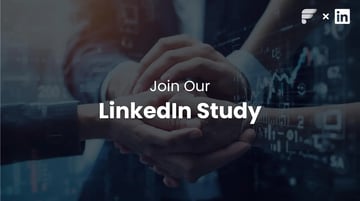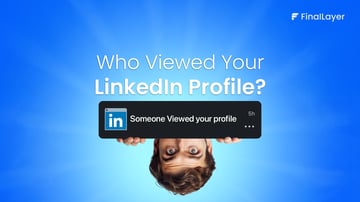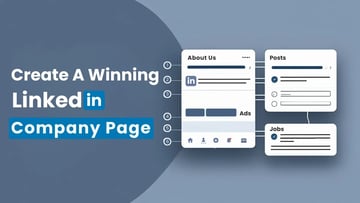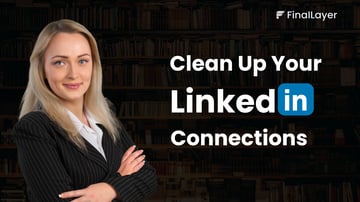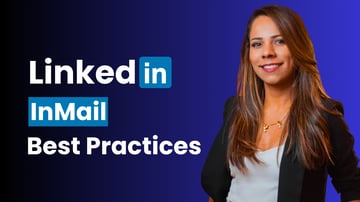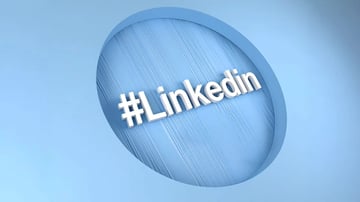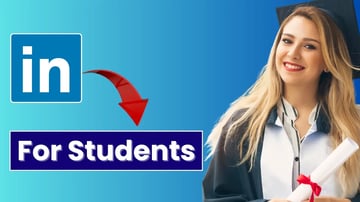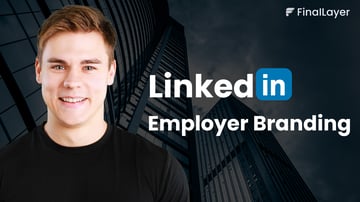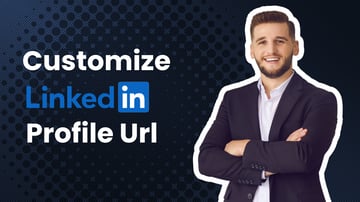LinkedIn has evolved from a networking platform into the primary battleground for job opportunities. With 95% of recruiters using LinkedIn to identify qualified candidates, your presence on the platform directly impacts your career prospects. The stakes are high: 57% of employers are less likely to hire candidates they can't find online, making invisibility a career liability.But only having a LinkedIn profile is no longer sufficient. Today's job market demands active engagement. Recruiters now filter searches to show the candidates active within the last 30 days, and if you're not posting, commenting, or engaging regularly, you're invisible to hiring managers. This shift has made LinkedIn activity a competitive advantage as a study found that one in six early-career professionals attributed their job success directly to their LinkedIn content rather than traditional applications.
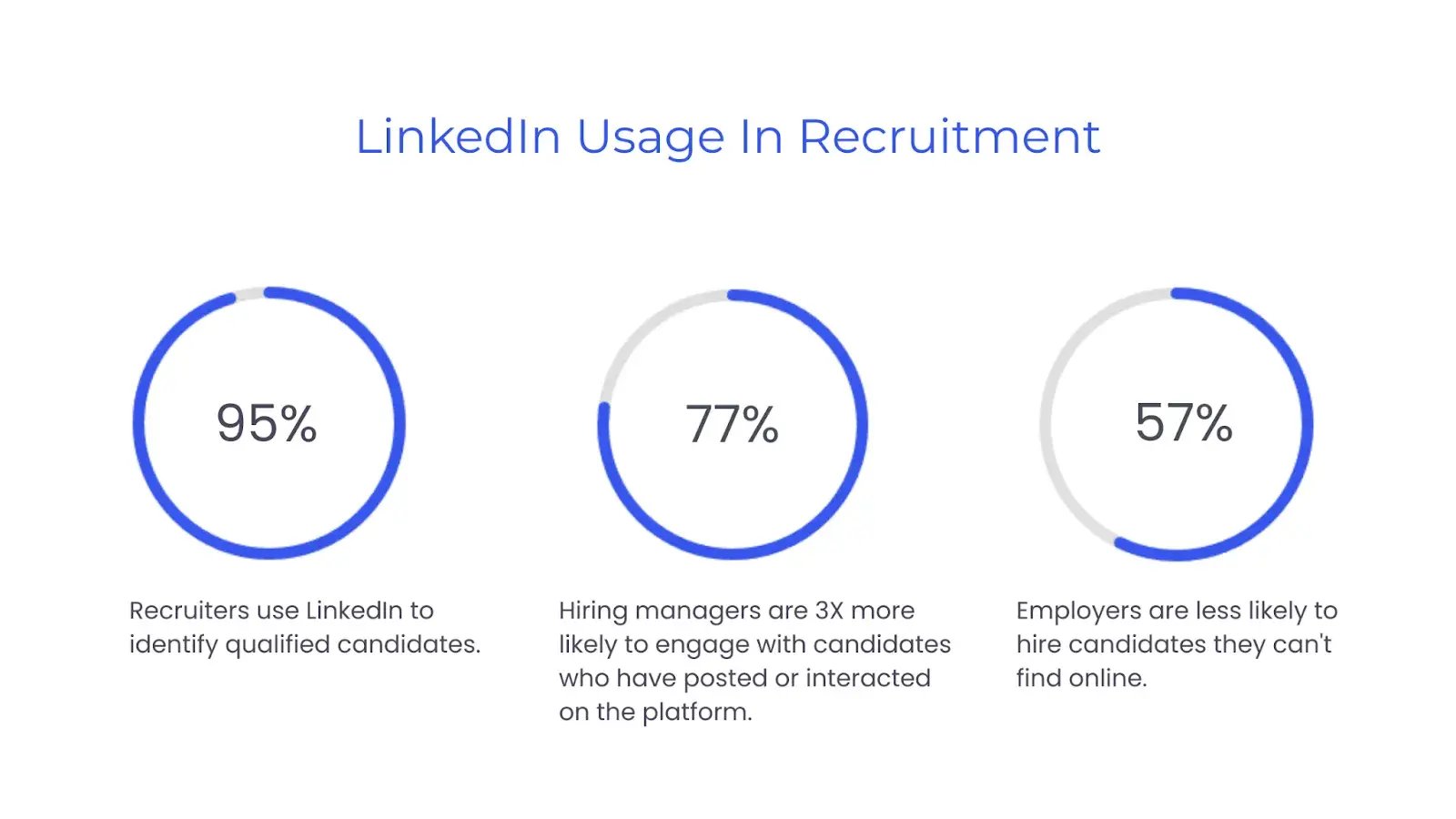
The message is clear: in today's digital-first hiring landscape, regular LinkedIn posting is essential for job search success. In this post, we'll explore how crucial LinkedIn activity has become, backed by expert advice and real success stories, plus practical strategies on what to post to catch recruiters' attention.
Real People, Real Results
The numbers tell one story, but real experiences reveal more. Here's how LinkedIn posting actually pays off: meet professionals whose LinkedIn activity directly sparked career breakthroughs.
Jonathan Javier :
After Google rejected him, he shared his job search story on LinkedIn. His post went viral, catching attention from hiring managers at Lyft, Tesla, and others. Within days, he received at least 10 referrals for new roles. Most remarkably, one referral reached a Google hiring manager, and within two weeks of his post, Javier landed a job at the company that initially rejected him. His story proves that transparency and authenticity can "turn rejection into opportunity" by exponentially expanding your network.
Keith Stelter :
Stelter lost his job during the 2020 downturn. He decided to "market himself" through daily LinkedIn postings. He shared positive work stories, lessons learned, and achievements. His authentic, resilient content reached over 200,000 views monthly. The results came quickly: resume requests and interview invitations from people who discovered him through posts.
“There is no doubt in my mind that it was because of what I did on LinkedIn that I secured this next role.”
-Stelter
The company president who hired him had been quietly following his LinkedIn journey. His story highlights how consistent, authentic posting can rally a community around you that wants to assist you.
Sam Mitchko :
After graduating during the pandemic, Mitchko struggled with traditional job hunting-300+ applications with minimal response. He shifted focus to building a LinkedIn presence. He grew his network to 250+ connections and began posting consistently. The results were that 25 recruiters proactively reached out in six months. He secured a role he never applied for, complete with a 60% salary increase.
“All of my interviews in that period were for jobs I hadn’t directly applied to; they came through LinkedIn visibility, which makes you feel pretty darn good.”
-Sam Mitchko
Sam attributes this success to keeping an up-to-date profile and maintaining a steady presence on the platform.
These stories share common threads: authenticity, consistency, and value-driven content. Each professional understood that LinkedIn rewards meaningful contribution to professional discourse.
Expert Insights: Why Industry Leaders Recommend Regular Posting
Career development professionals consistently emphasize that LinkedIn's algorithm favors active contributors over passive observers. The platform operates on an engagement where visibility directly correlates with participation.
“I can’t tell you the number of times where we had two equally qualified candidates and the one with the stronger LinkedIn profile got the job.”
-Lianne Zhang (Talent and LinkedIn Expert)
Hiring managers want to understand your thinking process, communication style, and professional perspective-insights that static resumes cannot provide. Regular LinkedIn posting offers a window into your personality that traditional applications lack.
“If you're on the job hunt and haven't updated your LinkedIn or stayed active, you're missing out big time. Recruiters don’t just post jobs and wait; they actively search for candidates.”
-Farah Sharghi (Career Coach)
Recruitment specialists note that active LinkedIn users demonstrate qualities highly valued in today's workplace: initiative, communication skills, and digital fluency. When recruiters see candidates articulating complex ideas and maintaining consistent online presence, they observe these skills that predict workplace success.
"If I come across your profile and can’t see much detail of what you’ve done, I’ll be forced to skip over it.."
-Matt Hearnden (Senior technical recruiter)
Career coaches emphasize that regular posting helps overcome the "experience paradox"-needing experience to get experience. By sharing projects, learning insights, and industry observations, early-career professionals can demonstrate competence even when formal work history is limited.
“You can be incredible in what you do. But if no one knows, it doesn’t matter. Start posting about it.”
-Daniel Korenblum
What Content Attracts Hiring Managers and Recruiters on LinkedIn?
So far, we've established that LinkedIn posting is crucial for job success. But here's the next critical question: Do all types of content perform equally, or do certain formats have a better chance of catching hiring managers' attention? Based on surveys, expert advice, and success stories, here are the key content strategies that actually boost your hiring prospects.
Showcasing achievement:
Posts highlighting professional accomplishments and learning milestones resonate strongly with hiring personnel. Share certification completions while announcing readiness for new roles. For example:
"Thrilled to complete the Google Data Analytics Certificate. Over six months, I mastered SQL, Tableau, and statistical analysis. Now actively seeking junior data analyst opportunities to apply these skills."
Such posts work well because they combine a note of achievement with an invitation for professional connections or advice.
Job Search Announcements:
If you are actively looking for a job, consider crafting a post that announces your availability while emphasizing your skills and what you offer. For example:
"After three years in customer service, I'm transitioning into UX design. I've completed coursework in user research and prototyping. Excited to create intuitive digital experiences. I'd appreciate design community connections!"
This type of post demonstrates direction, preparation, and enthusiasm. Recruiters are drawn to candidates who display these qualities and clearly articulate their strengths and enthusiasm for a role.
Lessons Learned:
Content that reveals your professional journey through storytelling engages hiring managers who appreciate authenticity and growth evidence. For example:
"One year ago, I was terrified of team presentations. Through Toastmasters and colleague support, I recently delivered a proposal securing $50K funding. My advice for presentation anxiety: start small, practice regularly, find your support squad."
Such posts demonstrate traits like perseverance, self-awareness and growth. These posts often gain traction because they are relatable and invite engagement.
Industry Insights:
Share thoughtful observations about trends, news commentary, or helpful tips. For instance:
"After attending three tech meetups this month, I've observed a clear shift in hiring priorities. Companies are now prioritizing problem-solving skills over specific programming languages. One startup founder told me, 'We can teach syntax, but we can't teach critical thinking.' For fellow developers: what skills do you think will be most valuable in the next five years?"
These types of posts demonstrate industry engagement and critical thinking while fostering meaningful discussion with your professional community.
Rich Media and Hashtags:
To attract attention in crowded feeds, consider incorporating rich media and keywords. Posts with images or short videos can stand out visually. Use relevant hashtags that can help surface your posts to people searching those topics.
Engagement-Driven Content:
The LinkedIn algorithm favors content that generates interaction, so design your posts to spark conversation. Ask for advice, invite people to share experiences, or end with clear calls to action. Actively engage with responses and thank people for their input - this demonstrates your communication and collaboration skills to recruiters while boosting your post's visibility.
A Note About Video for LinkedIn:
Create LinkedIn Video Posts Without Hassle
FinalLayer's Video Search Agent finds relevant video clips
for your post from your library or YouTube.
Video brings 5x more engagement on LinkedIn than other types of posts. But, LinkedIn is unique in the sense that both the text and video matter - most discovery still happens on the main feed, where text is important. Not your comfort zone to create videos? Curate and share video clips from industry insights and add your thoughts in the written post to be seen as a thought leader.
With Finallayer, it's incredibly easy to create video posts for LinkedIn - all you have to do is write the thought or topic you want to post about, and it will search for the most suitable clip to attach and generate a complete video post ready for LinkedIn. So there's no need to fall behind the trends just because of a busy schedule or because LinkedIn posts feel like another burdensome task.
Start Early, Start Smart
Building a strong LinkedIn presence is not a one-day project; it takes time. Most people only start focusing on their LinkedIn profile after college when they enter the job market, but this approach puts them at a disadvantage.
If you start building your profile as a student, by the time you graduate, you'll already have a strong LinkedIn presence. You'll have years of content demonstrating growth, learning, and professional interests - compelling stories that static resumes cannot convey.
Industry professionals who follow your student-to-graduate journey often become valuable advocates, mentors, and referral sources. While your peers scramble to build their personal brand during job searches, you'll already have an established network ready to support your career goals.
What Can Early Career Professionals Post About?
Early career professionals often worry about lacking professional experience, missing LinkedIn's true value. Educational journeys, internship experiences, project work, and career exploration provide rich content material that resonate with peers and industry professionals. Here are some content categories that work exceptionally well for early career professionals.
Academic Projects & Learning:
- Share key takeaways from challenging coursework or group projects
- Post about research findings, case study analyses, or capstone projects
- Discuss how classroom theories apply to real business situations
Internship & Work Experiences:
- Document lessons learned from part-time jobs, internships, or volunteer work
- Share behind-the-scenes insights from different industries
- Highlight skills developed through hands-on experience
Career Exploration Content:
- Post about informational interviews with professionals
- Share reflections from career fairs, networking events, or company visits
- Discuss career pivots or discoveries about different fields
Industry Insights & Trends:
- Comment on news articles relevant to your field of interest
- Share observations about emerging technologies or market changes
- Ask thoughtful questions about industry developments
Personal Development:
- Document skill-building efforts (certifications, online courses, workshops)
- Share books, podcasts, or resources that shaped your thinking
- Reflect on leadership experiences in student organizations
As former LinkedIn CEO Jeff Weiner pointed out that “The key is authenticity - post about genuine learning experiences and curiosities rather than trying to sound overly professional.”
What next?
The evidence is clear - regular LinkedIn posting has evolved from optional to essential for career success. When 77% of recruiters actively scout LinkedIn and hiring managers filter for recently active candidates, inactive profiles become invisible to career-changing contacts. So, commit to consistency, set realistic posting schedules (start 2x a week and build up to daily), focus on Value-Driven Content, engage actively, and build a genuine network through consistent interaction. Your next breakthrough might be one thoughtful post away.

